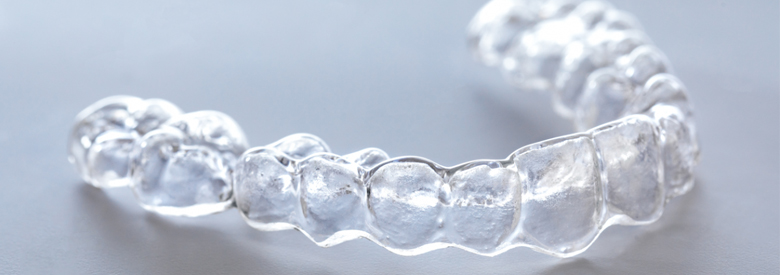
Clear aligners are the latest in treatment of minor irregularities in bite and teeth alignment. They are a very thin, completely transparent cover made of plastic and worn on one or both jaws during night and most of the day. During the course of treatment, a patient will change a few sets of aligners. Each set edges teeth a bit closer to the desired position, and, depending on the complexity of a case, the number of sets will vary, along with the cost.
Digital scanning is the technology which facilitates the fabrication of clear aligners, where each set is made according to a 3D image of the initial teeth position and the shifting that needs to take place. First, the design software creates a time-lapse animation of the teeth shifting process. This animation is then used to fabricate sets for each stage of the treatment, and it also conveniently shows to the patient the expected outcome if they wear them continuously without fail.
Animation of teeth shifting during clear aligner treatment
Clear aligners are intended for those who do not want to wear dental braces because of the discomfort, their characteristic visibility, or they simply wish to be able to take them off if needed, which is possible with this type of braces. However, clear aligners are not suitable for major irregularities, and they are recommended when patients wish to narrow a gap or to eliminate minor to medium imperfections in position. Our practice has shown that in 50% of cases clear aligners will do the job, whereas patients wishing for clear aligners but are clearly not candidates for them are recommended to go for sapphire braces, whose brackets are transparent.
It is commonly the case that there is not enough room for teeth to fall into perfect position, which requires some teeth to be narrowed using a technique called stripping. It is done at the onset of the treatment or at a particular interval within the treatment, which will be precisely defined by the initial 3D modeling.
Technically, it is possible to fabricate all necessary aligners and hand them to the patient to save them the trouble of coming for checkups, but this practice may be disadvantageous to the patient. If certain teeth need stripping at a particular time, it is necessary that the patient comes to the clinic at the right moment, and without checkups we are unsure just when that moment is. This is why we highly recommend to patients unable to come to regular checkups to at least have two of them placed in appropriate intervals.
A patient may take off clear aligners if so desired, but it is ideal to wear them almost throughout both day and night, or about 20 hours per day. They are regularly removed during meal and need vigorous washing before putting them on again. The aligners themselves are very comfortable to wear. It is practically impossible to discern a person wearing ones, unless you come as close as half a meter away from them, and in presence of bright light. Unlike regular braces, its effect on speech is minimal or completely absent. What is important is to avoid hot drinks, and to store them in a special box when removed in order to avoid any breakage and to protect them from bacteria. Clear aligners must be cleaned by a toothbrush once a day.
